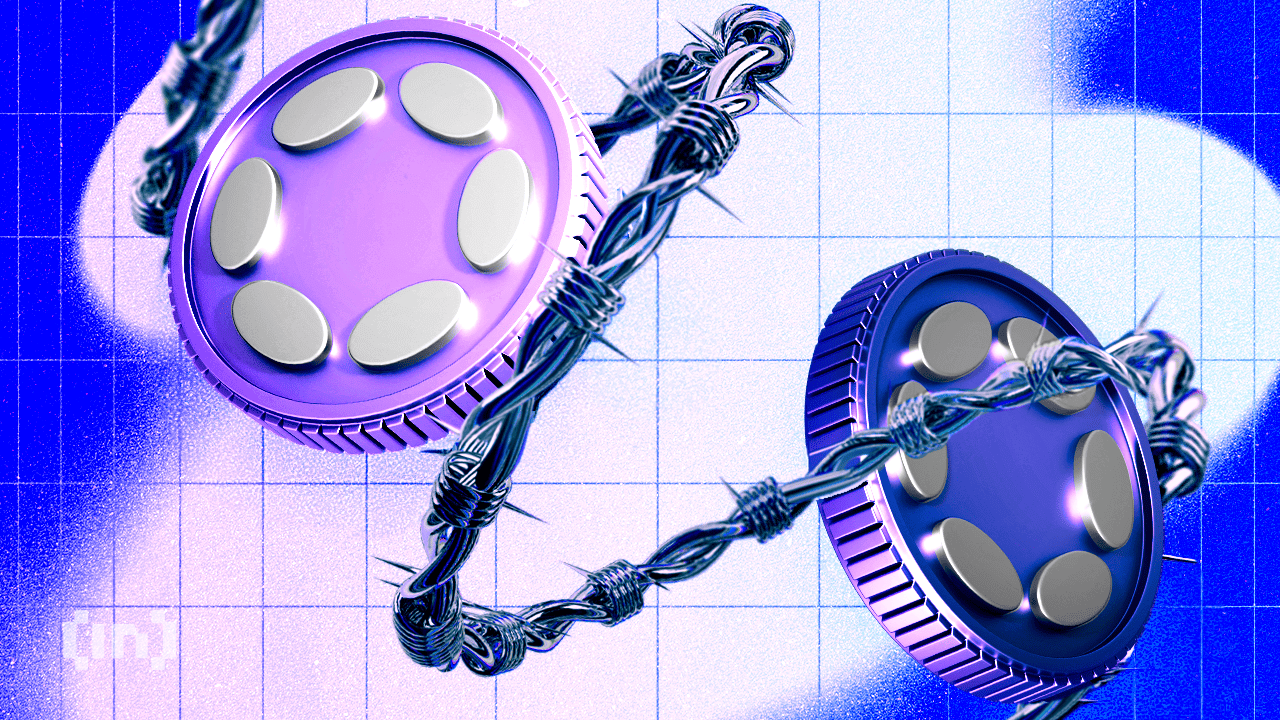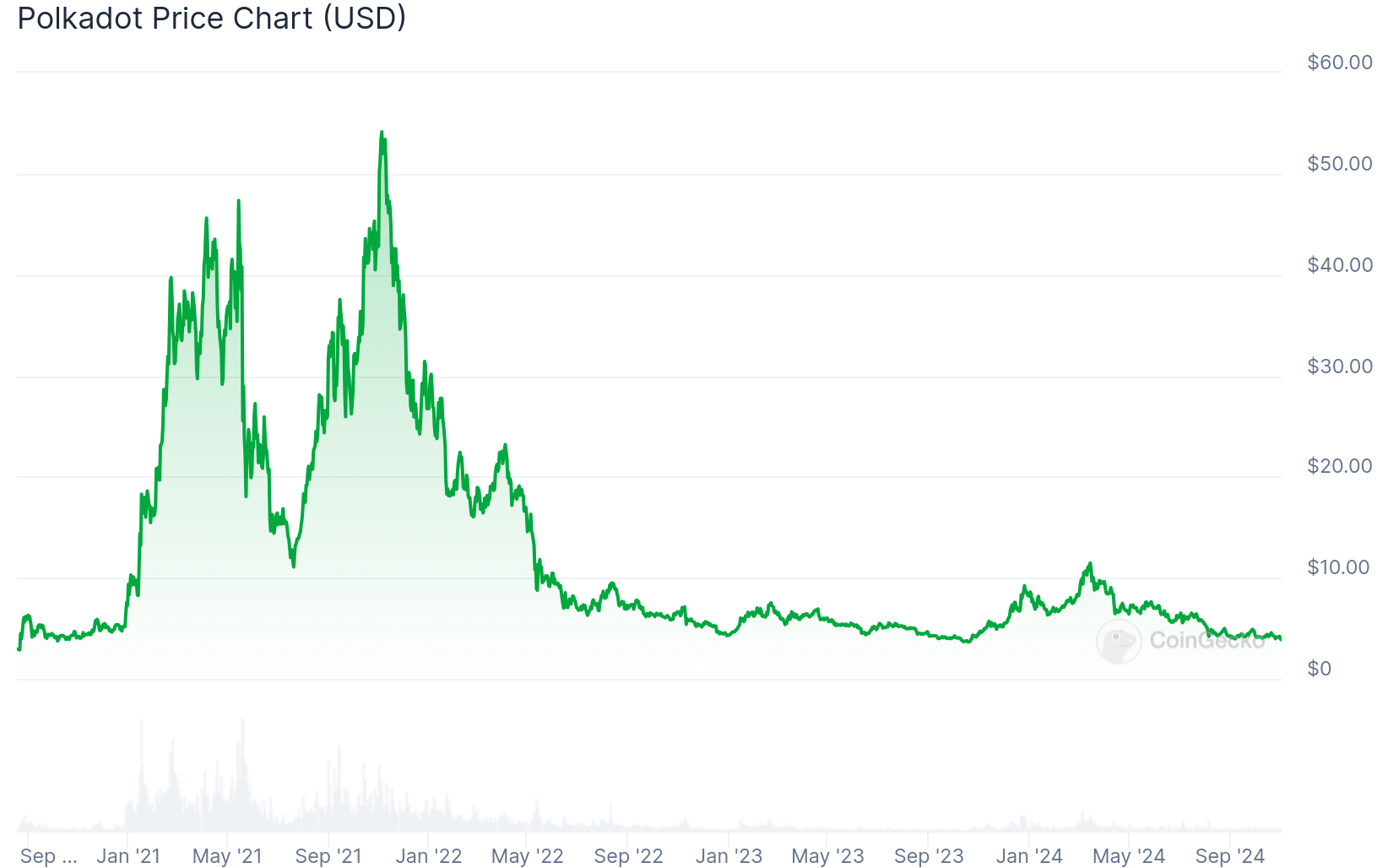Polkadot is a layer-zero blockchain platform designed to connect multiple networks and improve interoperability. The altchain’s native DOT crypto serves a number of key purposes within the ecosystem, including facilitating network governance, bonding tokens to connect parachains, and staking. This guide everything you need to know about Polkadot in 2025.
KEY TAKEAWAYS
► Polkadot is a decentralized, multi-chain blockchain platform designed to improve scalability, interoperability, and security for web3 networks.
► Using a sharded architecture and a Relay Chain, Polkadot enables multiple blockchains (parachains) to operate simultaneously and interact with one another.
► With OpenGove, Polkadot’s governance is more decentralized, allowing DOT holders to propose, vote, and enforce network changes without hard forks.
► The DOT token serves multiple roles in the Polkadot ecosystem, including governance, staking, bonding, and paying transaction fees across connected blockchains.
What is Polkadot?

Polkadot is a secure and scalable multi-chain platform for the next generation of the Internet. It is constructed using Substrate, a framework that enables the building of interoperable and purpose-built blockchain systems comprising pre-built components.
Polkadot aims to offer a completely decentralized web under user control by giving an interoperable protocol that scales the network using modules. It also improves many of the bottlenecks faced in scaling blockchains.
SponsoredDOT is the native coin of the Polkadot network, with the Planck serving as its smallest unit. Unlike many other digital currencies, there is no supply cap on DOT. This is to incentivize the network and change it dynamically based on the staking participation rates among users.
Polkadot circles represent the several blockchains and structures in the Polkadot cryptocurrency universe. Dr. Gavin Wood, former chief training officer and major developer of Ethereum, founded the company.
He created Ethereum’s programming language for smart contracts, Solidity. After a few years of conceptualization and development, Polkadot officially launched in May 2020.
How does Polkadot work?
Polkadot is a sharded multi-chain network, working with a Relay Chain, which enables it to handle data and transactions simultaneously on many chains known as parachains.
As a result, it is possible to receive security from the network, vastly enhancing scalability, interoperability, and cross-chain capability, and eliminating the congestion, excessive fees, and incompatibility of legacy blockchains.
Using a governance structure maintained by DOT native coin holders, Polkadot maintains updates automatically without hard forks. Polkadot employs a nominated proof-of-stake (NPoS) consensus mechanism to coordinate the network. It rewards users for staking DOT, instead of the mining reward offered by proof-of-work (PoW) blockchains.
Furthermore, stakers who are interested in maintaining the entire system can operate a validator node. Validators can, therefore, generate new blocks, validate blocks on the Parachain, and ensure finality. Similarly, DOT holders can stake coins to engage as Nominators, choosing to support up to 16 Validators as reliable applicants with their stake.
NPoS is similar to delegated proof-of-stake (DPoS). In DPoS, stakers delegate their tokens to a validator to secure the network. If the validator misbehaves, their stake is slashed. In NPoS, both the delegates (validators) and the nominators stakes are slashed if the validator misbehaves.
Polkadot horizontal scaling
Generally, there are two approaches that you can use to increase the capabilities of a distributed network: vertical and horizontal scaling.
People often talk of a dichotomy between scaling up, (vertical scaling, moving to a more powerful machine) and scaling out (horizontal scalling, distributing the load across multiple smaller machines)…A system that can run on a single machine is often simpler, but high end machines can become very expensive, so very intensive workloads often can’t avoid scaling out.
Martin Kleppmann: Desiging Data-Intensive Applications
Polkadot takes the latter approach, horizontal scaling (scaling out). Instead of employing a monolithic blockchain structure (a single blockchain handles all the computation and storage), Polkadot spreads the load over multiple “machines” or parachains.
Its sharded architecture divides the network into shards (parachains) or discrete portions. This allows users to execute trades in parallel on each shard instead of sequentially over the entire network, as in previous generations of blockchains.
Multiple parachains can connect to Polkadot. Polkadot uses a Relay Chain to coordinate the actions of these several chains to promote composability and ensure security.
Sponsored SponsoredFeatures of Polkadot
Polkadot was one of the first blockchains to implement sharding. It has a few features that set it apart from both sharded blockchains and monolithic blockchains.
Connections: the relay chain
Having a blockchain is excellent, but its uses will be restricted until they can reach out to the greater blockchain ecosystem. To achieve this securely and successfully, a blockchain project would require enormous infrastructure. In fact, several have failed because they could not offer seamless connectivity.
Polkadot functions as a “relay chain” — a huge blockchain whose primary function is to connect other chains to themselves and facilitate communication between them. The “hub and spoke” topology provides additional benefits to the smaller blockchains connected to the relay chain.

Empowering construction: Substrate
The Polkadot framework contains Substrate’s highly effective tool that simplifies constructing a blockchain from scratch. It should assist teams in building the blockchain they desire and has protocol connection points that attach to the relay chain’s features.
This has two major advantages: first, it helps teams focus less on developing the infrastructure for yet another blockchain project and more on the added value of their own business. Second, it provides teams with brilliant ideas without the knowledge required to construct a network from scratch and access the blockchain world.
This sort of dual-enabling technology is potent and has been identified as one of the primary reasons teams are using Polkadot for their projects.
Security and speed: host platform
Once blockchain projects, known as parachains (since Polkadot processes transactions from all chains in parallel), are on the relay chain and operational, they may make use of Polkadot’s established security and scalable transaction speeds.
SponsoredNot having to construct their top-tier security with comprehensive audits and avoiding the exorbitant gas prices of other networks enables teams to devote more time and resources to the chain’s core value.
Connecting the world: Bridges
The parachain architecture of the Polkadot network is the source of the data. Polkadot is, by design, a relay between the parachains on its network. However, it also features bridges to Ethereum and other networks, allowing parachains to access and interact with a broad network of systems without selecting the network with the greatest connections.
Polkadot is not in a winner-take-all rivalry with top networks like Ethereum but instead competes for users while cooperating and giving value to both sides.
On-chain upgrades
Polkadot has the ability to make upgrades without creating a hard fork for large improvements. This decreases the likelihood of the community breaking in two, requiring a tremendous amount of administrative cleaning and experiencing unwelcome token volatility.
Polkadot governance
Polkadot OpenGov is a decentralized governance system for the Polkadot network that launched in 2024 and replaces the old governance mechanism. It introduced several key features, such as:
- Decentralized decision-making: DOT holders can submit proposals and vote on them, eliminating the need for a centralized council.
- Multiple referendum tracks: The system allows for multiple parallel referenda tracks.
- Polkadot Fellowship: This is a technical expert body that all DOT holders can join. It provides expertise and guidance without sole control over the network.
- Enhanced delegation: Voters can delegate their voting power to different experts for different types of proposals.
The Council and Technical Committee, which were part of the previous governance system, have been dissolved. Additionally, all DOT holders have equal rights to submit proposals and vote.
Polkadot coin (DOT)

DOT is a utility coin that is native to the Polkadot platform. DOT owners can vote on policy ideas, and the results can automatically be enforced across the system when consensus is reached.
Sponsored SponsoredThere are several applications for DOT. First, it gives coin holders the ability to vote on future code modifications and platform governance. The holders of DOT can also determine network costs and build or remove parachains.
The Polkadot network rewards DOT holders for following the rules and risks losing their stake if they do not. Additionally, DOT is used for bonding. When additional parachains are added to the network, bonded DOT coins are frozen for a period of time. After the bond, the time has elapsed, and the parachain is no longer part of the network, these DOT coins can be unlocked.
Furthermore, DOTs are used to pay transaction fees while sending messages or exchanging data between two blockchains on the network. Nominators also bind their DOTs to a validator that they support.
Bonding coins increases the network’s attack cost and permits DOT holders to receive coins as staking rewards. At the beginning of the network, the network generated 10 million DOT (old) as the native coin. The following DOT (old) and new DOT allocations are identical:
- 50% allotted to investors in the token sale
- 5% allocated to investors in the 2019 private sale
- 3.4% allotted to investors in the 2020 token sale
- 11.6% kept by the Foundation for future fundraising initiatives
- 30% granted to the Web3 Foundation for the immediate development of the Polkadot system and other unknown Foundation projects.
Price and price prediction

At its inception, DOT started off hot, eventually reaching its all-time high of $55 in 2021. The coin has since dropped in value, failing to reach its previous all-time high. This is largely due to a greater bear market that affected most capital markets.
However, in early 2024, DOT had a resurgence that coincided with the broader cryptocurrency market, likely as a result of the U.S. spot Bitcoin ETF approvals, which was also the catalyst for a renewed interest in Bitcoin.
Due to Polkadot’s positioning as an interoperable blockchain, which is a very popular narrative, the price of DOT could increase should the rest of the market experience a bull run. However, it is important to note that price predictions are difficult to predict, given any unforeseen circumstance.
To learn more about the potential price performance of DOT, check out BeInCrypto’s Polkadot price prediction.
Where does Polkadot stand?
Polkadot is one of the more successful technological and economic ideas in the blockchain sector, and the next few years will be essential for determining the network’s true potential. So far, the prognosis looks good. It’s still the early days in web3, so one can’t exclude the possibility that that may change. However, Polkadot’s remarkable development and rise compels an investor to keep a close eye on it.
This article is not financial advice. Investing in Polkadot (DOT) or other cryptocurrencies carries risks and you could lose money. Always remember to invest wisely.

